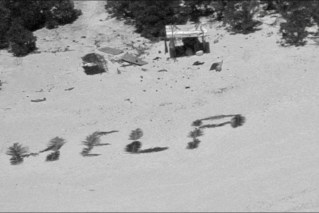James Matthews shipwreck off Perth coast mapped using 3D modelling
The wreck of a former slave ship lying just off the coast of Perth is being scoured by maritime archaeologists using new technology to revisit earlier excavations and help learn more about Australia’s underwater past.
The site of the James Matthews is being photographed to create a detailed three-dimensional model of the shipwreck.
It is hoped the work will eventually help determine new ways of protecting it and other shipwrecks as well as ways to test new techniques and methods.
“The colours and details are really accurate,” the WA Maritime Museum’s Madeline McAllister said.
“Whereas in the past we would have taken some photos to create a 2D site plan and then also done the measurements ourselves with tapes, so [it was] not quite as accurate as what we’re getting with these 3D models.”
The James Matthews was first discovered in 1973 lying largely buried in sand in shallow waters two-to-three-metres-deep, less than 200 metres off Woodman Point, just south of Fremantle.
It had sunk there after slipping its anchor during a storm and hitting rocks in July 1841.
At the time, the snow brig was a merchant vessel, and had travelled from London laden with farm equipment and construction material for the newly established Swan River colony.

Archaeologists in the 1970s sucked out much of the sand covering the James Matthews in their excavation. Photo: WA Museum
But archaeologists, who first excavated the ship in the 1970s led by former director of the WA Maritime Museum Graeme Henderson, soon discovered its link to the horrific trans-Atlantic slave trade.
It had previously been called the Don Francisco and was owned by a notorious and powerful Brazilian-born slave trader called Francisco Felix de Souza, who operated out of West Africa and was involved in power plays with leaders of the Kingdom of Dahomey, in present day Benin.
The Don Francisco was seized in 1837 off the island of Domenica as it headed towards Cuba by the British, who had passed an act abolishing the slave trade three decades earlier.
The British sailors found 433 slaves crammed inside the 24.5-metre hull.
A shoe, chess set, parasol among well-preserved artefacts

An ivory chess set recovered from the shipwreck is on display in Fremantle. Photo: ABC News (Nicolas Perpitch)

A model of the James Matthews, a ship built for speed to escape British anti-slavery vessels. Photo: ABC News (Nicolas Perpitch)
The ship should have been destroyed under the law of the time, but was instead repaired and renamed the James Matthews, a London-registered merchant vessel — paving the way for its eventual demise.
When it was wrecked off Woodman Point, the ship fell on its side and buried much of its cargo and rigging in the sand.
That helped preserve the artefacts.
“In the case of the James Matthews, it went into sand and the sand buried it with the shifting currents and so forth, and so basically most of the ship was still there. Wonderful,” Dr Henderson said.
“The sand gives them an anaerobic environment, which means no oxygen, which means not much in the way of deterioration had taken place.
“But it was amazing that in such shallow water this stuff was in such a good state of preservation.”
A leather shoe, a parasol with much of the lace preserved, an ivory chess set, and pulleys with rope still largely intact, were some of the surprisingly well-conserved artefacts discovered.
Intriguingly, the part-owner of the ship at the time, Henry de Burgh, later wrote 200 gold sovereigns were also lost to the sea, supposedly never recovered.

Madeline McAllister is creating the 3D model of the James Matthews shipwreck site. Photo: ABC News (Nicolas Perpitch)
Former WA Maritime Museum director Graeme Henderson, who has officially retired but still spends his days hunting shipwrecks, said the 3D modelling would help gain a better understanding of the site over time.
“The idea is we will come back very few years and take another set of photographs and be able to overlay the models,” he said.
“And you’ll see growth in seaweed and sponges on the site and you’ll also be able to see the deterioration if that’s happened.”
WA Museum maritime archaeology curator Ross Anderson said a lot of underwater cultural heritage sites, including shipwrecks like the James Matthews and prehistoric sites, were “out of sight and out of mind”.
“If people don’t see them, they don’t see the importance, so these kinds of visualisations and interpretations convey to people what’s under there, what’s under the water, what’s under the sand, [and that it’s] actually really important and worth preserving,” Dr Anderson said.








